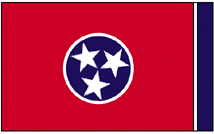[« Lack of Imagination...] [Not all were "Choosing to Stay"... »]
09/02/2005: They Saw It Coming...
They Saw It Coming: by Mark Fischetti (Contributing editor to Scientific American):The deaths caused by Hurricane Katrina are heart-rending. The suffering of survivors is wrenching. Property destruction is shocking. But perhaps the most agonizing part is that much of what happened in New Orleans this week might have been avoided.
Watching the TV images of the storm approaching the Mississippi Delta on Sunday, I was sick to my stomach. Not only because I knew the hell it could unleash (I wrote an article for Scientific American in 2001 that described the very situation that was unfolding) but because I knew that a large-scale engineering plan called Coast 2050 - developed in 1998 by scientists, Army engineers, metropolitan planners and Louisiana officials - might have helped save the city, but had gone unrealized.
The debate over New Orleans's vulnerability to hurricanes has raged for a century. By the late 1990's, scientists at Louisiana State University and the University of New Orleans had perfected computer models showing exactly how a sea surge would overwhelm the levee system, and had recommended a set of solutions. The Army Corps of Engineers, which built the levees, had proposed different projects.
.
Thus, in true American fashion, we ignored an inevitable problem until disaster focused our attention. Fortunately, as we rebuild New Orleans, we can protect it - by engineering solutions that work with nature, not against it.
The conceit that we can control the natural world is what made New Orleans vulnerable. For more than a century the Army Corps, with Congress's blessing, leveed the Mississippi River to prevent its annual floods, so that farms and industries could expand along its banks. Those same floods, however, had dumped huge amounts of sediment and freshwater across the Mississippi Delta, rebuilding each year what gulf tides and storms had worn away and holding back infusions of saltwater that kill marsh vegetation. These vast delta wetlands created a lush, hardy buffer that could absorb sea surges and weaken high winds.
The flooding at the river's mouth also sent great volumes of sediment west and east into the Gulf of Mexico, to a string of barrier islands that cut down surges and waves, compensating for regular ocean erosion. Stopping the Mississippi's floods starved the wetlands and the islands; both are rapidly disintegrating, leaving the city naked against the sea.
What can we do to restore these natural protections? Although the parties that devised Coast 2050, and other independent scientists and engineers who have floated rival plans, may disagree on details, they do concur on several major initiatives that would shield New Orleans, reconstitute the delta and, as a side benefit, improve ports and shipping lanes for the oil and natural gas industries in the Gulf of Mexico.
It's hard to say how much of this work could have been completed by today had Coast 2050 become a reality. Certainly, the delta wetlands and barrier islands would not have rebounded substantially yet. But undoubtedly progress would have been made that would have spared someone's life, someone's home, some jazz club or gumbo joint, some city district, some part of the region's unique culture that the entire country revels in. And we would have been well on our way to a long-term solution. For there is one thing we know for sure: hurricanes will howl through the Mississippi Delta again.
Karen on 09.02.05 @ 09:52 AM CST










